1. Introduction
Our project aims to answer a focus question - “how the Lingnan cultural and geographical backgrounds help constitute the identity of Guangdong’s artists.” Guangdong artists had been creating many masterpieces which contribute as significant cultural traces. Yet, a lot of people have a limited understanding towards Lingnan and Guangdong’s artists. Hence, this project aims not only to learn about Lingnan, but also to promote Guangdong’s artists. Geographically, Lingnan is a highly vegetated coastal area that is far away from the central political centre. With such geographical features, these allow Lingnan to receive diversified culture besides from the central China, including Latin America, Southeast Asia, Europe etc. In this essay, it is eventually found out that interactions between these cultural and geographical backgrounds then have made up the unique identity of Guangdong’s artists.
2. Cultural Geographical Perspective in Use
In this essay, we adopted the methodology of new cultural geography. It is believed that mere cultural and geographical perspective alone is not enough to investigate the question, but social and historical context are needed as well to decode it. We theorized and analysed cultural artifacts and representations with high sensitivity to the workings of difference and power. In brief, our approach is to first identify the cultural and geographical information coupled with social and historical basis for each identity of Guangdong’s artists, then we use distinct cultural traces like drawings as reference and demonstration.
3. Empirical analysis:
Spiritual Factor
From Song Dynasty to Ming Dynasty, there were two significant ideologies that contribute to the value of the literati.
First, the Confucianism presented the idea of humanistic pragmatism. It was crucial for scholars to not only learn, but to act out their learnings and contribute to the society. Scholars should focus on the interest of the people rather than themselves. The Confucianism had demonstrated the benevolence of human with the influence of banished officials. Officials were often sent to Lingnan as political punishment. Yet, with their rich knowledge and opinion, their arrival had benefited the popular mass in Lingnan. As a less developed region, their knowledge and outlook had stimulated the growth in the area. As these officials passed on their knowledge in Lingnan, this could be seen as the start of Lingnan Literati.
Two noticeable literati were Su Shi and Han Yu. They both demonstrated an optimistic attitude in adverse circumstances and had actively helped the Lingnan society solving different crisis. Eventually, the two became the role models for Lingnan people. The public followed their attitudes and accepted their worldview. For instance, Su was banished from the imperial court due to internal conflicts. In Huizhou, he educated the society with his plantation knowledge and suggested the local authority to construct a bridge to connect the states and counties. Han Yu was banished as he indicated that Buddhism was unbeneficial to the nation. He was sent to Chaozhou where he carefully solved the flood and protected the people living by the river with crocodile worship.
Second, the Taoism presented a different philosophy around Mount LuoFu, a famous spot in Guangdong. According to the legends, Mount Luo and Fu collided to form Mount LuoFu; whereas the discovery made by geographers explain that it was caused by faulting of the crust - which squeeze the granite and causing this special geographical feature after million years of erosion. In the private viewing session, we were honoured to have a close look at a few pieces of Houlai Wang - a painter and poet who immersed himself into the nature and brought his observations in the nature into his paintings. In one of his work Luo Fu Sheng Jing, he painted Guanyuandong in Mount LuoFu. According to history, one of the Daoist masters visited Guanyuandong created the Lingbao School – a school that promote the idea of religious practices and rituals of Daoist. Ever since, Mount LuoFu became a scared place for Taoists and have attracted millions of believers traveling miles to worship the space.
Political factors: (Ming-Qing Transition)
In cultural geography study, any conflicts between dominant and emerging resistant power in a place could exert influence on the traces. During the Ming-Qing transition, the power switched from Ming to Qing authority provoked intense resisting force among Guangdong literati, altering the paintings (traces) in Guangdong.
In the late Ming dynasty, the country was facing severe socio-political instabilities owing to the eunuchs’ control of the royal court. Since 1627, rebellions led by peasants had erupted throughout the nation. In 1644, Beijing fell to the peasant rebels, marking the end of the Ming dynasty. At that time, many people fled to Guangdong to escape from battles in the Central Plain, including Ming loyalists and royals.(李權時,1993) Later on, Zhu Youlan, the Prince of Gui, was enthroned in Zhaoqing, and established his Yongli regime of Southern Ming dynasty in Guangdong. (袁鐘仁,1998) In 1650, Guangdong was under attack by Qing forces for almost one year, resulting in up to 700,000 death in Guangdong.(汪宗衍,1976)
The series of political events had aroused Guangdong people’s patriotic sentiment and revolutionary spirit, prompting them to engage in anti-Qing movements. Many Guangdong literati were also activists of anti-Qing movements and some had even sacrificed their lives for these movements. (李權時,1993) In addition, after the dynasty transition, many Guangdong literati were reluctant to serve the Qing government and chose to live in seclusion in remote mountains or even become a monk. (朱萬章,2010) This created a culture of retreating to the mountains among Guangdong literati.
The dynasty transition had led to changes in the theme, symbolism and style of Guangdong paintings.
First, many retreated Guangdong literati regarded landscape paintings as the best way to express their sentiment. Landscape paintings thus became the most prevalent art theme. (朱萬章,2010) For example, the famous artwork, Landscape, was drew by Cheng Jiu, one Guangdong literati who became a monk after the dynasty transition. (Figure 1)
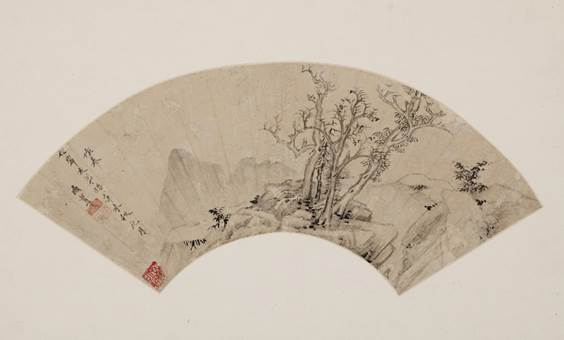
Figure 1: Cheng Jiu, Landscape (釋成鷲《山水》)
Source: Art Museum, The Chinese University of Hong Kong, retrieved from Art Museum, The Chinese University of Hong Kong website
Second, symbolism was commonly used in Guangdong paintings. For example, Yang Changwen, a Guangdong literati, painted Orchid, Bamboo and Rock (Figure 2 and 3) to praise the uprightness of a friend who refused to work for the Qing government.(朱萬章,2010) Orchid is a symbol of ‘gentlemen’ (君子) in Chinese culture. This shows the nationalist fervour and revolutionary spirit of the painter.
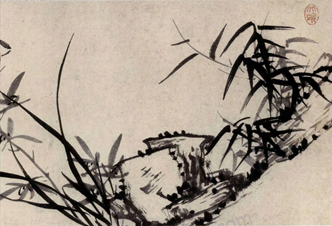
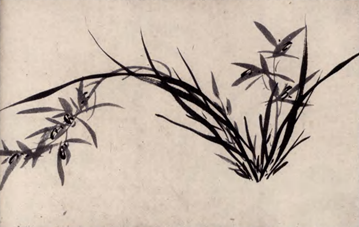
Figure 2 and 3: Yang Changwen, Orchid, Bamboo and Rock (楊昌文《蘭竹石圖》)
Source: Guangdong Museum, retrieved from 朱萬章(2010)《明清廣東畫史研究》
Third, a scene of desolation was a common characteristic of the Guangdong paintings at that time. For instance, in Strolling in Autumn (Figure 4), Gao Yan, one of the Guangdong literati who lived in seclusion in mountains, depicted a bleak landscape in autumn, with a solitary scholar walking in the forest and a temple in the mountain, to convey his loneliness and suffering brought by the fall of his country (Figure 4) (香港藝術館,2020)

Figure 4: Gao Yan, Strolling in Autumn (高儼《秋原策杖圖》)
Source: Hong Kong Museum of Art, retrieved from Hong Kong Museum of Art website
Economic Factors: Booming Foreign Trades
Between the years 1757 and 1842, Guangzhou was the only official port that was opened to overseas exchange in China. The commercial culture in Lingnan created the Chinese export paintings (traces) in Guangdong.
In fact, Guangdong Province is one of the major ports for foreign trading since the Tang Dynasty. In the Reign of Qianlong (1757), the Qing government forbade all the marine trading activities in the coastal ports due to the administrative inconvenience, leaving the port in Guangzhou (Civil and Municipal Affairs Bureau of Macao S.A.R., n.d.). Therefore, until the Opium War, the transactions between China and the foreign countries concentrated in Guangdong, promoting the cultural exchange between oriental and occidental. In the cultural aspect, the traditional Chinese culture stresses agriculture and restrains commerce. However, Lingnan culture tells a different story. In this business community, the social structure was diversified and commercialized, and citizens advocated the pursuit of economic interests. Both the geographical and cultural backgrounds flourished under Lingnan's economic development, which created the Chinese export paintings (traces), a completely different style of painting from that created by the Guangdong literati.
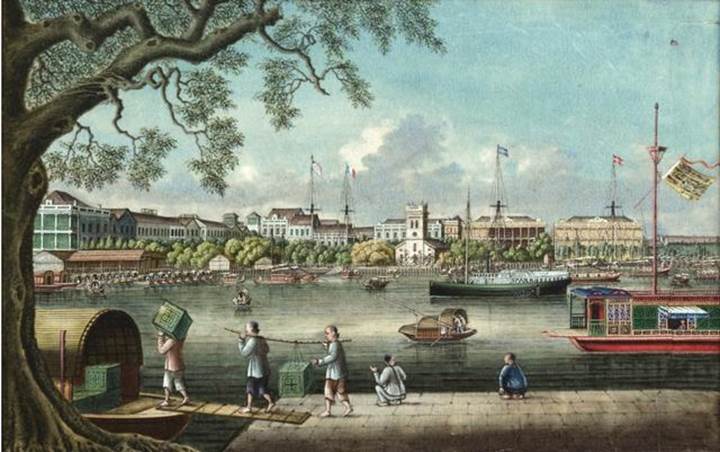
Figure 5: Tingqua, Studio of: View on the Canton Waterfront, Gouache on Pith Paper,《從廣州河南遠眺十三行商館區及明輪蒸汽船「Spark」號》
Source: Hong Kong Maritime Museum, Retrieved from https://artsandculture.google.com/asset/view-of-the-waterfront-at-canton-with-the-paddle-steamer-spark-tingqua-studio-guan-lianchang-fl-1840-1870/UgF3qiu4cTz3XA?hl=zh-tw
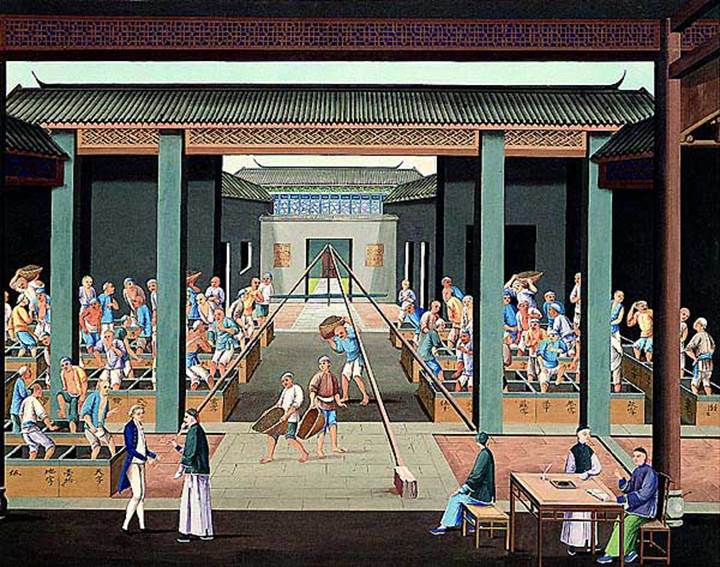
Figure 6. Anonymous, Production of tea: Packing tea for export, 《茶葉生產:茶葉裝箱外銷》
Source: Hong Kong Museum of Art, retrieved from https://hk.art.museum/en_US/web/ma/collections/china-trade-art.html
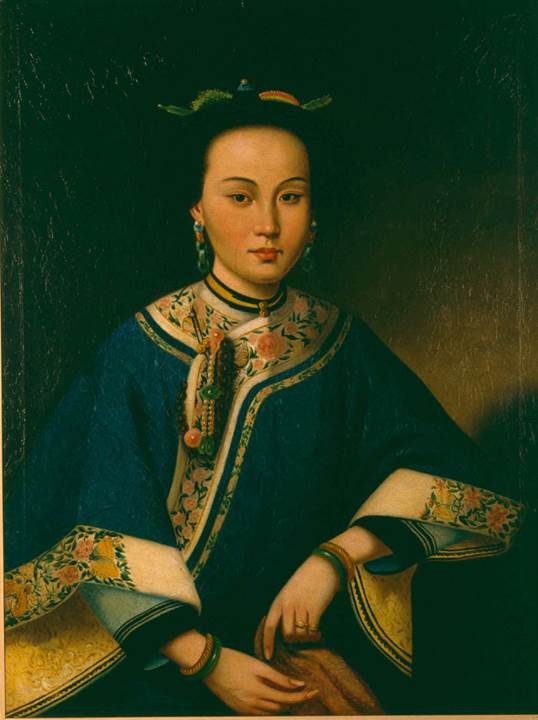
Figure 7: Anonymous, A Chinese lady, 《貴婦像》
Source: Hong Kong Museum of Art, retrieved from https://hk.art.museum/en_US/web/ma/collections/china-trade-art.html
Chinese export paintings were mainly oil paintings, watercolors on pith, or gouaches on paper, board, and glass. They used Western painting techniques to epitomize contents full of chinoiserie. Those paintings depicted contemporary life in China, illustrating the sceneries, occupations, plants and insects, as well as costumes (Liang, Burigio, Bailey & Cheung, 2020). Since transportation and technology development was not as advanced, China as a mystic oriental civilization had aroused the curiosity of foreigners. As it was hard to travel to China, the export paintings served as souvenirs to satisfy their fascination and thus was spread. Export paintings are realistic and exquisite. The difference between the export and traditional paintings verified one of the three main characteristics of Lingnan scholars, which is to be flexible and emphasizes mercantilism.
4. Conclusion
In summary, our project examined how the sense of identity of Lingnan scholars towards Lingnan are cultivated in the perspective of cultural geography. We separated it into culture and geography which contain three factors respectively. By linking its location in the southern part of China with Taoism and Confucianism ideologies, they explained the common ideal of Lingnan scholars shown in paintings and how it heightened their attachment to Lingnan. Besides, combining the political background of resisting Qing Emperor, its distant location from the north and abundant fields in Lingnan accounts for their openness and anti-traditional character which strengthened their affinity towards the place. Finally, the fusion of business culture and Lingnan’s coastal geographical context contribute to traits of flexibility and emphasis on mercantilism. This reinforced their bonds to Lingnan. Last but not least, studies on characters extension from Lingnan scholars to artists are expected to conduct in the future.
Reference
Liang, H., Burgio, L., Bailey, C. F., & Cheung, C.S. (2020). Culture and Trade through the Prism of Technical Art History – a study of Chinese export paintings. Retrieved from https://gtr.ukri.org/projects?ref=AH%2FK006339%2F1#/tabOverview
Civil and Municipal Affairs Bureau of Macao S.A.R. (n.d.). Export Paintings. Retrieved from http://www.mam.gov.mo/oldmam/photolist2.asp?prg_id=2004010101&lc=3&grp=2&name=Export%20Paintings
William, I. (2014). Created in Canton: Chinese export watercolours on pith. 广州制作 : 欧美藏十九世纪中国蓪纸画 (第1版 ed.). 广州市: 岭南美术出版社.
Hong Kong Museum of Art. (n.d.). Production of tea: Packing tea for export. Retrieved from https://hk.art.museum/en_US/web/ma/collections/china-trade-art.html
Hong Kong Museum of Art. (n.d.). A Chinese lady. Retrieved from https://hk.art.museum/en_US/web/ma/collections/china-trade-art.html
Hong Kong Maritime Museum. (n.d.). 從廣州河南遠眺十三行商館區及明輪蒸汽船「Spark」號. Retrieved from https://artsandculture.google.com/asset/view-of-the-waterfront-at-canton-with-the-paddle-steamer-spark-tingqua-studio-guan-lianchang-fl-1840-1870/UgF3qiu4cTz3XA?hl=zh-tw
李權時(1993)。《嶺南文化》。廣州 : 廣東人民出版社。
袁鐘仁(1998)。《嶺南文化》。瀋陽 : 遼寧敎育出版社 。
朱萬章(2010)。《明清廣東畫史研究》。廣州市 : 嶺南美術出版社。
汪宗衍(1976年12月)。〈明清之際廣東書畫家 為何氏至樂樓藏品展覽作〉,《中國文化研究所學報》第8卷第2期。取自


